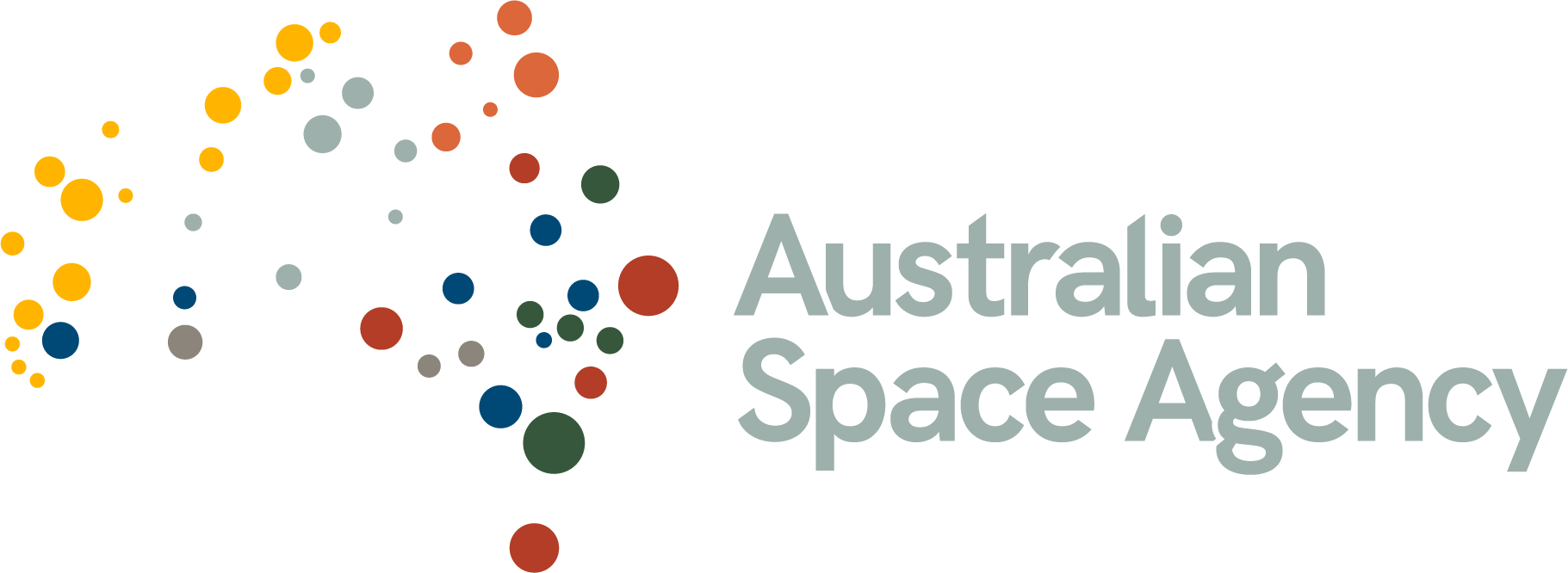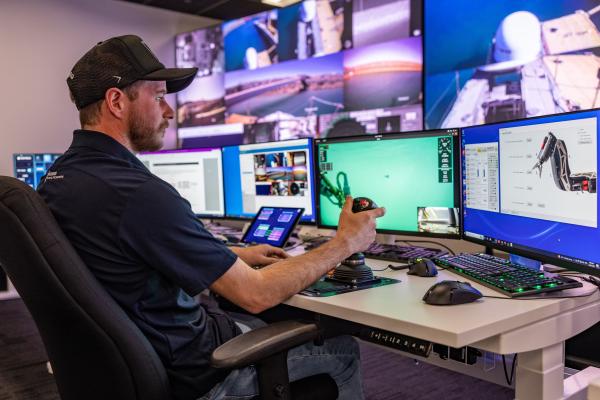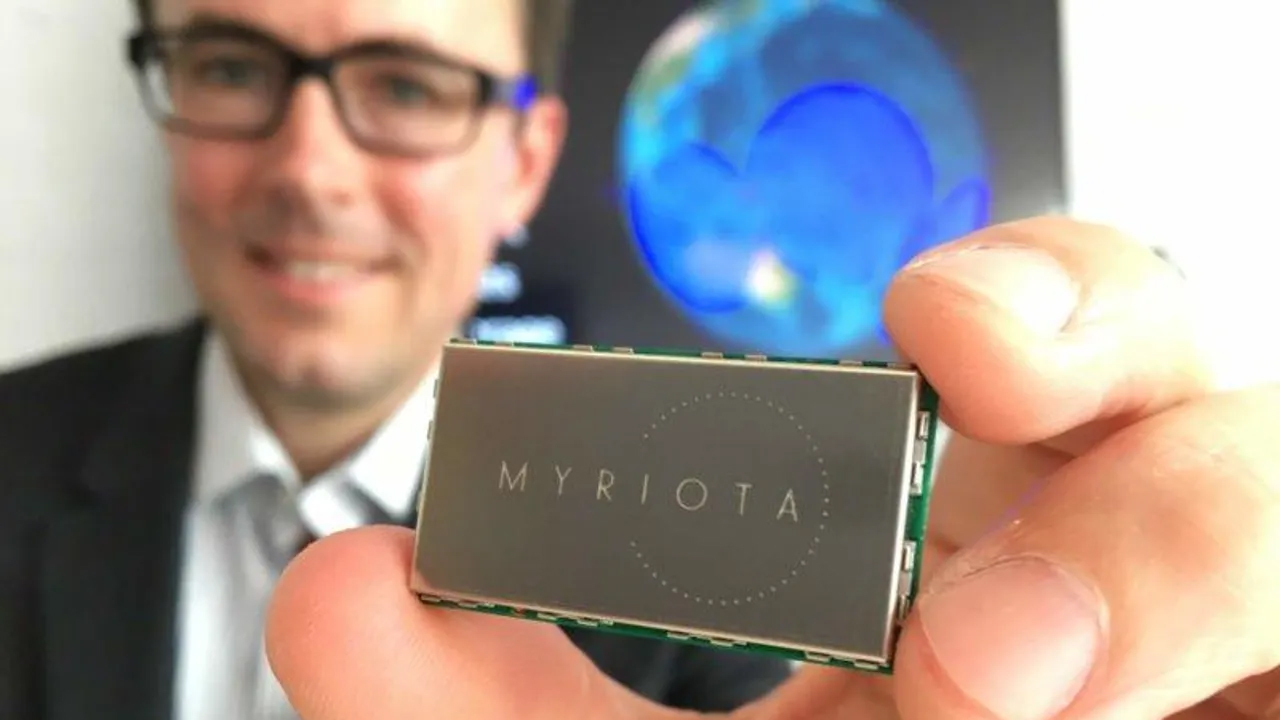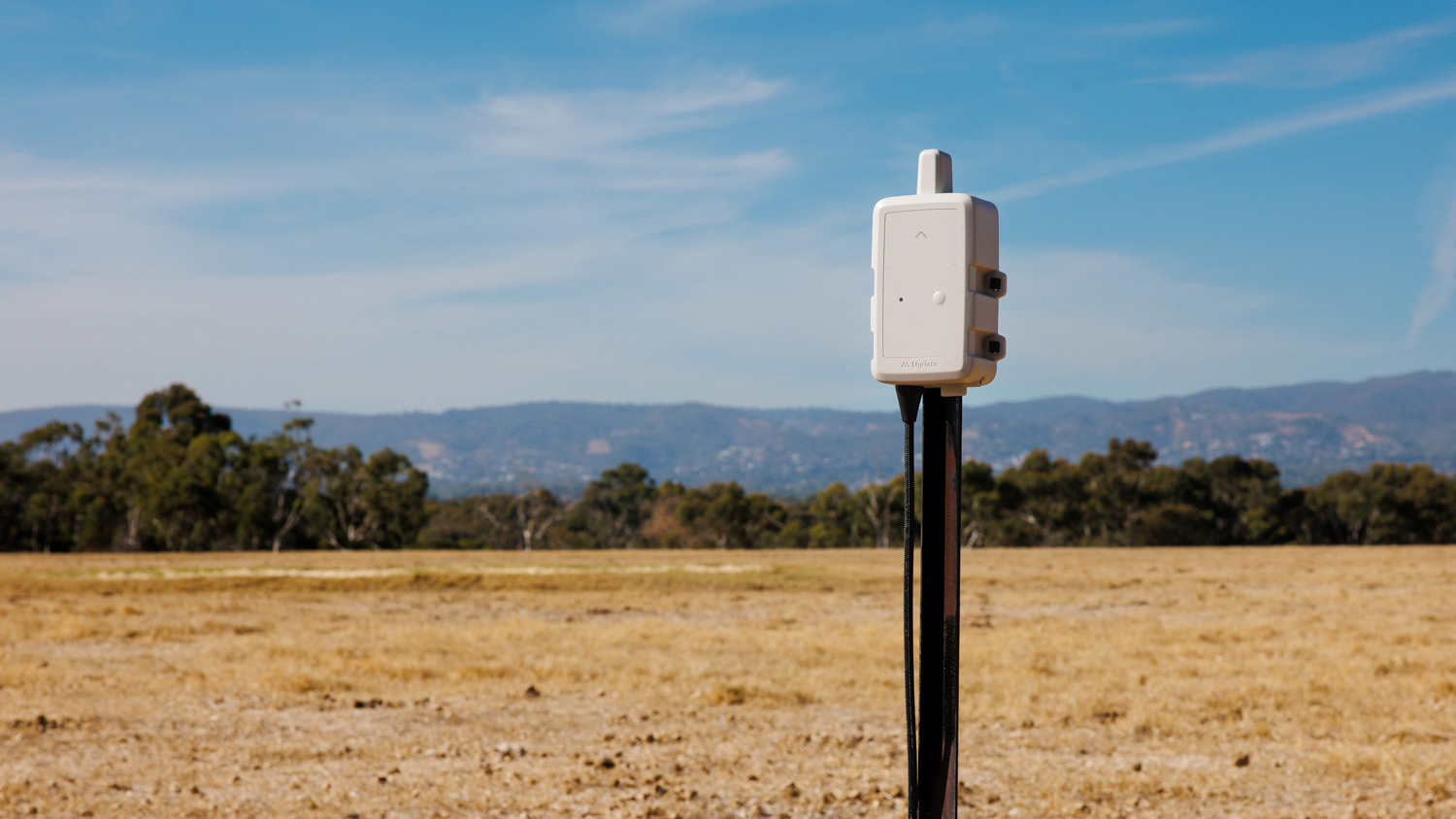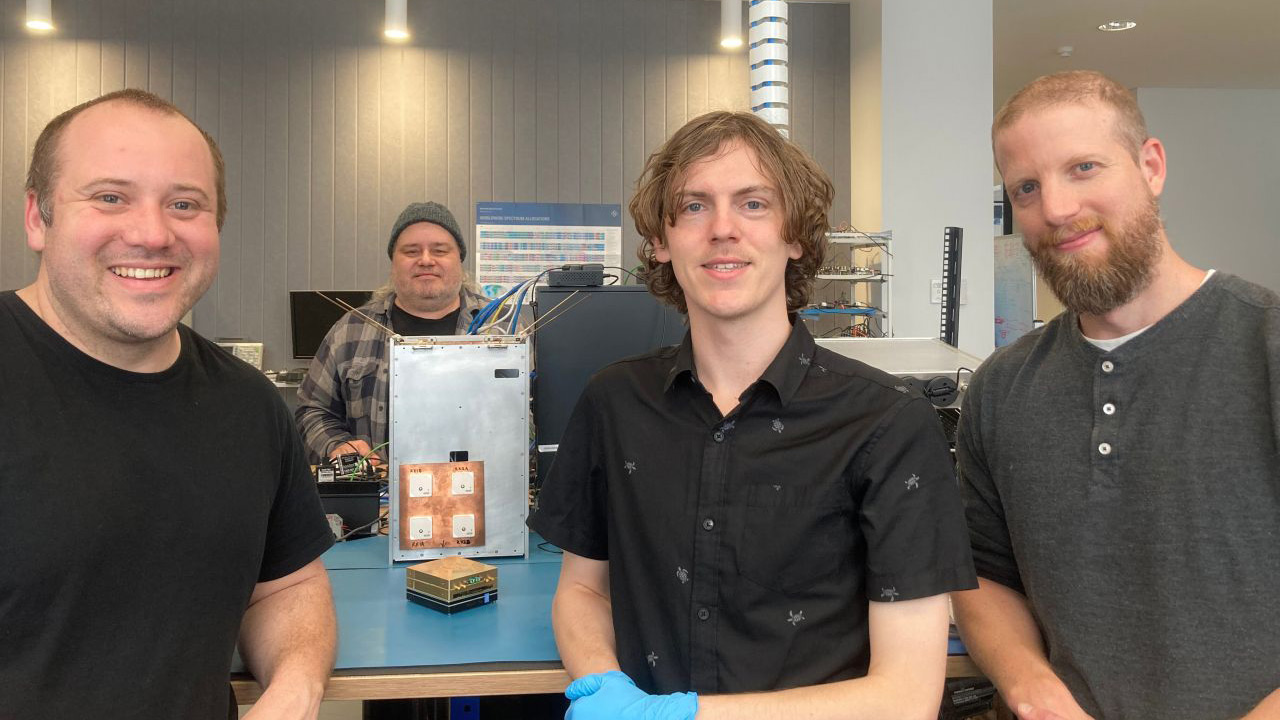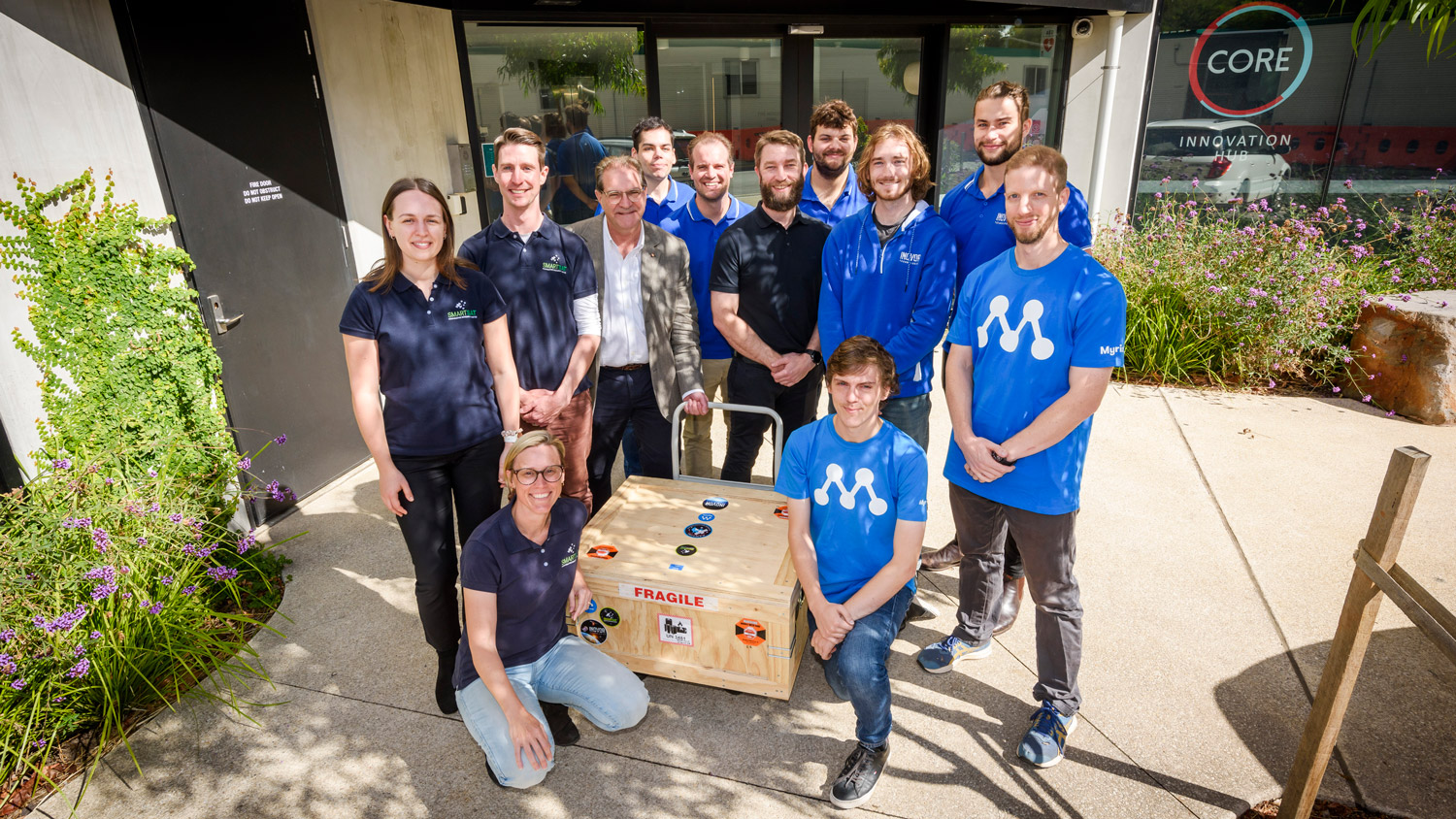With a global customer base and a team of close to 100, Adelaide-based Myriota is celebrating a decade of delivering space-enabled Internet of Things technology.
Key facts
Key facts
- Myriota enables customers to monitor assets remotely via Internet of Things devices linked to a satellite communications network.
- The company began as a university research spin-off, and now provides low-cost, secure service to customers worldwide.
- With support from the Agency’s Moon to Mars initiative, Myriota is now preparing to take the capability off-Earth, and monitor assets in space.
Main image caption: David Haley (left) and CEO Ben Cade cut 10th birthday cake.
“There was definitely a school of thought that we'd be able to take the company to a certain point, but then we’d just have to move the whole thing overseas.”
So says David Haley, CTO and co-founder of Myriota, reflecting on the beginnings of his satellite telecommunications company in 2015.
And yet – defying those early predictions – he’s speaking from Adelaide, where Myriota’s headquarters continue to house an Australian success story.
Myriota’s specialty is low-cost, low-power, secure satellite connectivity for the Internet of Things (IoT): a technology using a network of sensors attached to physical objects to connect them to the Internet and gather data from them in real-time.
Through satellite communications, Myriota can cover the majority of the globe not served by cell towers – so users can monitor and manage critical infrastructure and resources in remote and regional locations.
It’s improving productivity and efficiency for customers worldwide in agriculture, logistics, mining, and environmental conservation, plus government sectors like water agencies, border security, rail and road management, and meteorology.
Humble beginnings
Myriota has attracted over $100m of venture capital and government investment.
Back in 2015, however, the idea merely existed on paper; a concept developed by David and fellow co-founder Alex Grant at the University of South Australia.
The duo led a team that designed and built a demonstration network that could connect sensors and relay data via satellite. From there, they began commercialising their research into an affordable, globally available service.
“There was a gap in the market… an opportunity to invent new technologies with purpose,” David says.
“We're talking about a massive-scale, global, secure, long battery life service that needed new technological breakthroughs.”
“Also, the opportunity to create a global company headquartered here in Australia – and share that opportunity with other very clever Australians to join us.”
Making the capability catch on
One of those Australians who joined is Paul Sheridan, who became VP Strategic Partnerships at the company in 2019.
In 2017, while leading Optus Satellite, he crossed paths with Myriota, which led to an investment from parent company Singtel.
“What Myriota were doing was extremely innovative and intriguing – as part of the investment due diligence, we at Optus spent a fair bit of time understanding the business and the technology,” Paul says.
“So when an opportunity came up to join the team, yeah, I jumped aboard.”
At that stage, many companies still didn’t fully comprehend how Myriota’s technology could help them make better decisions – so attracting customers in the early years was slow going.
Thanks to patience and hard work, that knowledge gap has since emphatically closed.
“People used to make decisions based on what they've done for years… now we're seeing a lot more sensor-based technology coming to agriculture or water management,” Paul says.
“The other thing we're seeing is that people who are providing service, rather than the end users, are the ones interested in how that kind of ability is being used.”
“A good example is management of power… electricity authorities taking an interest in how you're using the power during the day, so they can start to be more effective and more efficient in how they manage the overall capability of the network.”
With increasing uptake of the technology, David even sees a gradual reshaping of business models.
“If you're a company that sells pumps, for example, you can deliver a pump as a service, and monitor its performance,” David says.
“You can be proactive with preventative maintenance, and make sure the pump is going to behave itself… and if you’re detecting that it's not, you can get ahead of that, and keep the customer satisfied.”
IoT goes interplanetary
On Myriota’s workbench – next door to the balloons from the previous week’s birthday celebrations – sits a palm-sized piece of technology that could help define the company’s next ten years in business.
With support from the Agency’s Moon to Mars initiative, Myriota is building a low-cost satellite payload to provide IoT services in space itself.
The payload will be demonstrated on a future mission in low Earth orbit, and allow space agencies and private companies to remotely monitor and communicate with their assets on the Moon and beyond.
The design is a more powerful evolution of a system that flew on the South Australian satellite Kanyini in 2024. Whereas that system was tailored to Kanyini, this next-generation version is a scalable, modular unit compatible with different satellites, and allows stacking of multiple units for more computing capacity.
Space & Mission Engineer Andrew Meldrum, a young professional recently recognised by Via Satellite for his work, is eager to see the payload demonstrate Myriota’s experience.
“This payload is bringing together all those lessons learned, and making kind of the ultimate payload we always wanted to make – combining all of the strengths of our previous payload projects, with the added versatility of an all-new scalable and modular architecture.” Andrew says.
“I'd love to see it support a lunar-based economy in the future, where we have robots and people and infrastructure on the surface of the Moon… when operations are occurring on the Moon, we’ll have a payload ready to support.”
Adrian Shuard, leading the project as Principal Satellite Engineer, adds that the future possibilities are vast.
“We just had a very successful qualifications test campaign, which has unlocked about six years of operations in low lunar orbit,” Adrian says.
“The payload has been tested to levels high enough that we would be able to launch and operate successfully pretty much anywhere in the solar system."
On course for the future
As anticipation grows for the next-generation payload to open a new chapter at Myriota, David acknowledges the influence of Australia’s growing space sector and venture capital market on the company’s success so far.
“A key part of looking back over the last ten years is to recognise there's a whole ecosystem around the country contributing to this,” David says.
“And of course, very soon into (Myriota’s) life, the Australian Space Agency itself was created… another fantastic way of supporting the space industry.”
“Government’s always been very supportive – from some of the work we've done with Defence, all the way back to before we even began the company, (when) we had support from DSTO (the former Defence Science and Technology Organisation).”
Underpinning it all, though, is the team David has proudly watched grow around him.
“One of the fantastic things over the ten years is to make that shift from being a bunch of engineers to being an actual company,” David says.
“That includes everything from engineering through to the commercial arm of the organisation, to sales and marketing, and that engagement to make sure we're building the right products… people and culture, and finance, and spectrum and regulatory, which is critical.”
“You sort of ask, what are we looking forward to in the future – it’s kind of a weird response, but one of the things I'm looking forward to is the challenges.”
“That’s because of the way our team comes together in response to those challenges, and learns from them, and builds the next big thing to solve the problems in the world that matter.”
“The team's incredibly resourceful and resilient, and relentless – so I’m looking forward to more challenges, and the opportunities to accompany them.”
Credit for all images: Myriota.
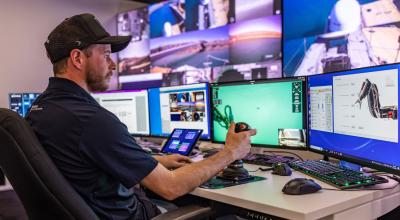
Industry showcase
Australian space innovations making an impact.
